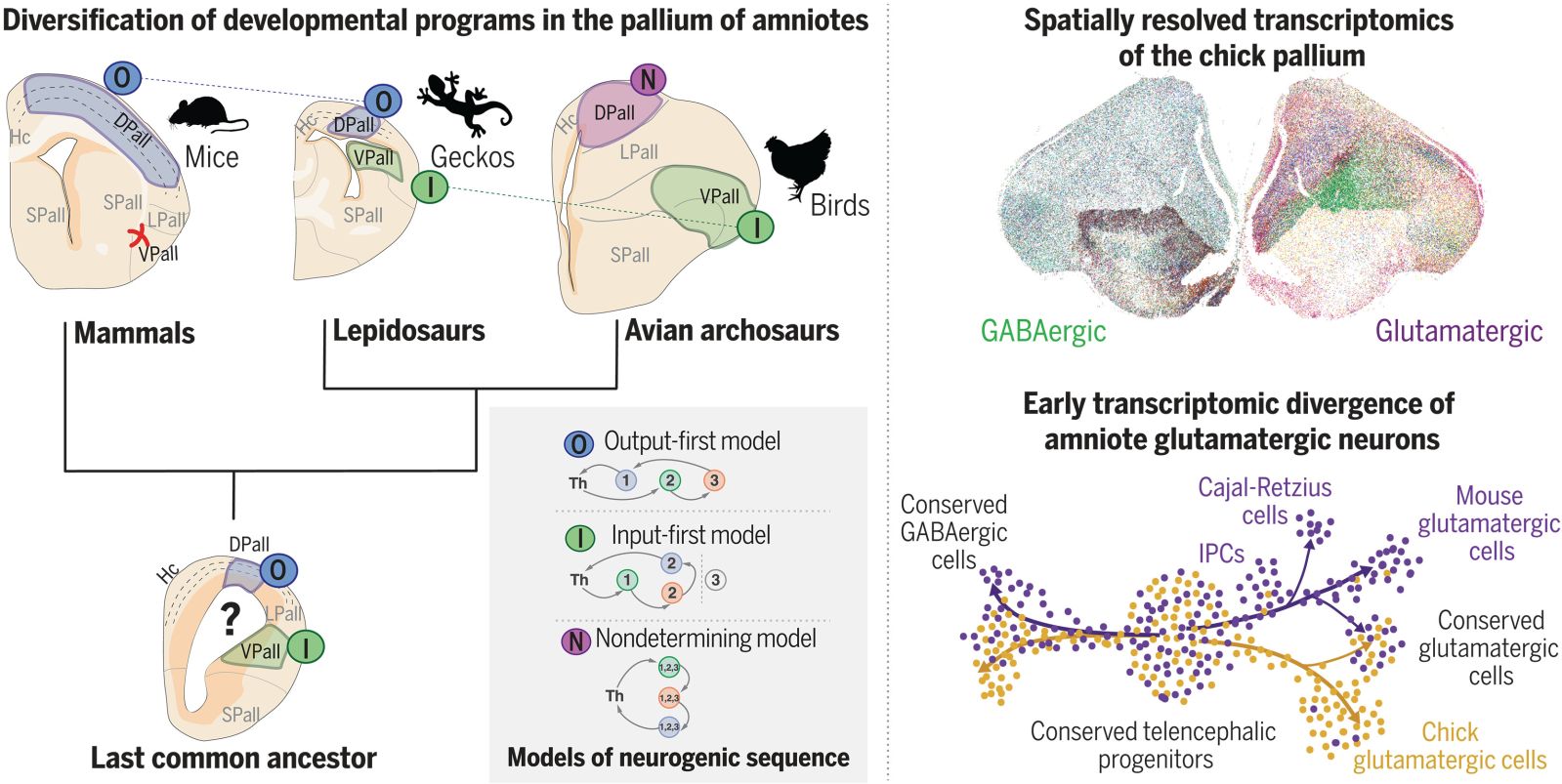Follow us on Google News (click on ☆)

The pallium, a crucial brain region for cognitive functions, has long been considered similar among these species. However, the developmental mechanisms and cell types differ significantly. The studies show that neural circuits formed through distinct evolutionary pathways.
Researchers used advanced techniques such as spatial transcriptomics to analyze neuron formation. They discovered that the genes involved vary across species, indicating convergent evolution rather than homology.
A second study compared brain cell types in birds with those in mammals and reptiles. It reveals that birds retained ancestral inhibitory neurons, but their excitatory neurons evolved uniquely.
These findings highlight the evolutionary flexibility of brain development. They show that advanced cognitive functions can emerge through very different genetic and cellular pathways.
This research opens new perspectives in comparative neuroscience. Understanding the genetic programs behind specific neuron types could shed light on neurodevelopmental research.
The studies, published in Science, use multidisciplinary approaches to trace the evolution of brain circuits. They show that evolution has found multiple solutions to build complex brains.

Evolutionary history of pallial development in amniotes:
- Left: Illustrations of different neurogenesis sequences in the pallial circuits of amniotes.
- Top right: Spatial transcriptomics reveals extensive neuronal diversification in the chick pallium.
- Bottom right: Single-cell RNA sequencing shows conservation in GABAergic neuron differentiation, contrasting with the diversification of glutamatergic neurons.
Abbreviations: DPall (dorsal pallium), Hc (hippocampus), IPCs (intermediate progenitor cells), LPall (lateral pallium), SPall (subpallium), Th (thalamus), VPall (ventral pallium).
What is the pallium?
The pallium is a brain region present in vertebrates, playing a key role in cognitive and sensory functions. In mammals, it includes the neocortex, responsible for complex thinking.
In birds and reptiles, the pallium has similar functions but differs in structure and development. These differences reflect specific evolutionary adaptations for each group.
Recent studies show that, despite comparable functions, the developmental mechanisms of the pallium vary considerably between species. This suggests independent evolution rather than a common origin.
These findings challenge the idea that similar brain structures imply common evolutionary origins. They highlight the complexity and diversity of evolutionary pathways.
What is convergent evolution?
Convergent evolution occurs when different species develop similar traits independently, often in response to comparable environmental challenges. This does not result from a common ancestry.
In the case of bird and mammal brains, similar neural circuits developed through distinct genetic and cellular pathways. This illustrates functional convergence rather than structural homology.
Studies using spatial transcriptomics revealed that the genes involved in neuron formation vary between species. These genetic differences support the idea of convergent evolution.
This evolutionary flexibility shows that nature can find multiple solutions to achieve complex functions, such as cognition. This enriches our understanding of biological diversity.